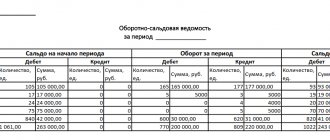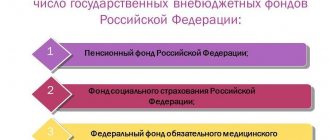Scope of application
Every day, company management is faced with management costs that have nothing to do with production, sales or revenue-generating services. The question arises of how to take them into account correctly. Accounting 26 makes it easy to do this. First, all general business expenses are taken into account in this account, and then written off to the debit of accounts 90 “Sales”, 20 “Main production”, 29 “Service of production and economy” or 08 “Investment in non-current assets”, depending on the direction of the main activity of the enterprise.
Money is leaving
The most active users of account 26 are organizations related to the provision of services: dealers, brokers, forwarders, agents. It can include all expenses and be credited to sales accounting.
Trading companies rarely turn to account 26 in their activities. It is easier for them to assign account 44 “Sales expenses” for their business expenses. They attribute all costs to him.
Organizations engaged in agriculture distribute their general business expenses at the close of the reporting period once a month or quarterly by type of production. The exception is the cost of feed, seeds, raw materials for semi-finished products and materials. At the end of the year they are subject to adjustment to the level of actual costs. Also, if the company’s accounting policy allows this, they can be written off to the debit of account 90 “Sales”.
Construction companies, as well as house-building factories, mechanization departments, factories for the production of building materials 26 use accounting accounts to account for the costs of servicing workers, the costs of organizing work on construction sites, and maintaining administrative and economic personnel. General business expenses at the end of the month are written off to the debit of account 20.4 “Costs of construction and installation work.” Factories and house-building plants distribute them according to the types of services provided and products produced. And the mechanization departments are proportionally divided between the services provided to third parties and the construction and installation work performed.
Note! In budget accounting, the purpose of account 26 will be completely different. There it will be off-balance sheet. Budgetary institutions take into account property transferred for free use in accordance with Order of the Ministry of Finance of the Russian Federation No. 157N dated December 1, 2010.
Construction
The account is used by 26 organizations. Typical wiring
Organizations that are not involved in the production of products (except for trading enterprises) use account 26 to account for expenses for the main activity. Costs are taken into account in the section of expenses for business needs, and then written off to sales.
Analysis of accounting for expenses for business needs in account 26 is carried out for each item of costs separately.
The list of transactions used when generating account 26 is as follows:
Debit
- 02. Involves the costs of depreciation of the organization’s main resources;
- 04. Intangible stocks;
- 05. Amortization of intangible assets;
- 10. Accounting for materials necessary to meet the needs of the enterprise;
- 16. Change in the price of material assets;
- 23. Additional productions;
- 29. Takes into account both production and economics of the enterprise;
- 43. Accounting for finished products;
- 60. Mutual settlements with organizations of suppliers and contractors;
- 68. Expenses for taxes and fees;
- 69. Accounting for the expenditure of funds for social insurance and security;
- 70. Employee salary expenses;
- 71. Settlements with accountable persons;
- 76. Settlements with debtors and credit institutions;
- 79. Expenses that are necessary for on-farm needs;
- 91. Other expenses and income.
- 94. Shortages and expenses from damage to valuables;
- 97. Expenses for future needs.
Credit
In credit entries, many items coincide with debit entries. These are accounts 10, 23, 29, 76, 79, 97. Which is quite logical, because such expenses cannot be predicted in advance. Even if you plan them, it will still not be possible to determine the exact amount.
The list of accounts corresponding to account 26 (excluding the above matches) will look like this:
- 20. Funds for main production;
- 28. Manufacturing defect;
- 86. Finance necessary for certain purposes;
- 90. Sales;
- 99. Profits and costs.
Account characteristics
What activities can be classified as general business expenses:
- cash payments to employees of the administrative and economic apparatus who do not bring direct income to the company: directorate, accounting department, secretariat. Account 26 reflects wages, bonuses, vacation pay and other incentives paid by the company;
- insurance premiums paid by the company from the earnings of employees of the administrative and economic apparatus, subject to payment to the budget of the Russian Federation;
- depreciation of intangible assets and fixed assets acquired for the needs of the administrative and economic apparatus;
- rent, except for profit-generating premises: production workshops, retail premises, etc.;
- costs of repairing operating systems not related to production activities;
- expenses associated with the provision of consulting and information services;
- costs of materials that will be used for management needs;
- entertainment expenses;
- staff development;
- security of premises;
- recruitment;
- subscription to periodicals;
- software;
- telecommunications, communications, internet;
- business trips of administrative and economic staff.
To account for general business costs, enterprises use a full or partial journal-order form. They reflect information on payroll, consumption of materials, the total amount of wear and tear on the operating system, enter transcript sheets containing various financial expenses, etc.
Note! Payment for services rendered for the maintenance of general business personnel is all 26 accounts.
Education
What are administrative expenses and how do they differ from commercial expenses?
Management costs include costs that do not have a direct connection with the production or sale of goods, services, or work. If costs can be associated with one of the areas of business activity, they are considered commercial (for example, wages and deductions for the head of a production department).
Cost calculation
Management costs can be included in the cost price if they are distributed in proportion to revenue across all types of manufactured products (sold goods, works, services). When developing an accounting policy, an enterprise (organization) must be guided by Law No. 129-FZ and paragraph 4 of PBU 1/2008.
The chart of accounts is developed on the basis of the Plan approved by the Ministry of Finance on October 31. 2000, and based on the scope of activity, legal form, scale and structure of the enterprise. The accounts that will be necessary to account for business activities are selected and supplemented with subaccounts and analytical accounts. If some accounts are not needed, they are not included in the work plan. Administration costs are always included in general business expenses (accounts 26 and 27).
Closing
To determine active or passive account 26, you need to pay attention to how costs are reflected on it. They are distributed as a debit and written off as a credit to the cost accounts for the main production. Thus, account 26 in the accounting department is active. It closes monthly. All balances are transferred to the cost of production. The balance at the end of the period should be zero.
There are two ways to form costs:
- At actual cost (full).
- Direct costing or at reduced cost.
An enterprise can use only one method in its activities, which must be fixed in its accounting policies. It will not be possible to change it. Closing the account 26 will depend on the chosen method.
If the organization uses the formation method at actual cost, then in this case general business expenses will be closed to account 20 “Main production”. If the company has service or auxiliary workshops that provide services to third parties, then the costs must be divided between accounts 23 “Auxiliary production” and 29 “Service production and facilities”. The procedure for writing off and distributing general business cost bases must also be reflected in the accounting policy. The accounting entry in this case will look like this:
Dt20 (23, 29) - Kt26
How to close the 26th account if the company has chosen the direct costing method. Everything is very simple. General business expenses when working at a reduced cost will be taken into account in account 90.2 “Cost of sales”. Wiring sample:
Dt90.2 - Kt26
In accounting, problems sometimes arise with writing off general business expenses. Why is account 26 not closed? Most likely he has an opening balance, which he shouldn't have. There are several reasons that, by eliminating them, can solve this impossible question:
- First of all, you need to check the accounting policy settings in the accounting program. It should indicate the method of cost formation at the enterprise, as well as information on how general business costs are distributed.
- The second possible reason may be incorrect analytical accounting for general business expenses. You should check the correctness of the distribution of costs by type of item, as well as by division of the company. Most likely, an error will be discovered in the details of the operations performed.
The accountant closes the month
. What to do if there was no revenue during the reporting month. There is also a way out. You need to create a sale for 1 kopeck and send it to a fake counterparty. After this, you can close general business expenses from account 26 to account 20 “Main production”. After this, all that remains is to manually reverse the extra penny at the end of the year.
An example of how to close account 26 manually by posting:
Dt26 - Kt02 - depreciation on fixed assets has been accrued.
Dt26 - Kt10 - inventories are written off.
Dt26 - Kt70 - wages accrued to the administrative and economic apparatus.
Dt26 - Kt68 (69) - insurance payments have been calculated.
Dt20 (21, 29, 90) - Kt26 - costs have been written off.
Important! If general business expenses are taken into account in tax accounting as indirect, then temporary differences invariably arise. They must also be written off by postings.
Accounting example for account 26
Let's look at the rules for closing account 26 using an example. NPO “Good Day” produces scissors and rulers. Products are produced at planned cost. In the organization, it is customary to reflect the main costs on account 20, and reflect indirect costs on account 26.
The accounting policy of the NPO “Good Day” reflects:
- General business expenses are written off to the cost of production;
- distribution of costs between types of products should be made according to the volume of material costs.
In March 2021, direct production costs amounted to 220,000 rubles:
- for the production of scissors - 150,000 rubles, including material costs - 80,000 rubles;
- for the production of rulers - 70,000 rubles, including material costs - 40,000 rubles.
Structure of indirect expenses—RUB 140,200:
- salary of management personnel - 100,000 rubles;
- insurance premiums - 30,200 rubles;
- rental of premises - 10,000 rubles.
1. We distribute indirect costs according to the volume of material costs using the formula:
Amount of indirect expenses for the production of scissors: 140,200 × 80,000 / 120,000 = 93,467 rubles.
The amount of indirect costs for the production of rulers: 140,200 × 40,000 / 120,000 = 46,733 rubles.
2. Close account 26, distributing indirect costs:
| Operation | Debit | Credit | Sum |
| Indirect costs for the production of scissors were written off | 20 | 26 | 93 467 |
| Indirect costs for the production of lines are written off to the main production | 20 | 26 | 46 733 |
How does account 26 correspond with other accounts?
It corresponds with other accounts in the chart of accounts, both in debit and credit. Basic debit entries:
Dt26
Dt26
Correspondence with loan accounting accounts:
Kt26
Financial analysis of management costs
Management costs in financial analysis are classified as semi-fixed, since their value does not depend on production volume. If the volume of products produced (sold) increases, profit per unit increases due to scale.
Difficult economic conditions force entrepreneurs to take a different look at the administration staffing table. Enterprise managers are trying to combine the functions of departments in order to reduce the number of employees. This allows you to reduce costs for salaries, rent, transportation, office equipment, and business trips. The amount saved is the amount of increased profit.
Some choose a different path - reducing wages, allowances and bonuses while maintaining the size of the administrative apparatus. This option is preferable because it does not increase the unemployment rate or reduce employee loyalty.
A good option is to transfer part of the office staff to the “home” mode, which allows saving on rent of premises, utility bills, and official transport. Almost all staff can work via the Internet.
Competent financial analysis allows you to use the optimization of administrative costs as a means of increasing profits. The funds saved on optimizing the management staff can be invested in development, reorganization, renewal, and innovation.
Top
Write your question in the form below
Postings
Which entries are most often used in accounting when writing off general business expenses:
- Calculation of depreciation of fixed assets for administrative and economic needs - Dt26 - Kt02.
- Costs associated with OS repairs by the organization itself or with the involvement of third-party specialists - Dt26 - Kt10 (60, 76).
- Depreciation was accrued for intangible assets (intangible assets) for administrative and economic needs - Dt26 - Kt05.
- The costs of renting premises that are not commercial or industrial are reflected - Dt26 - Kt76 (60).
- Costs for audit, information, consulting services - Dt26 - Kt76 (60).
- Expenses for training employees of the administrative and economic apparatus - Dt26 - Kt76 (60).
- Taxes written off - Dt26 - Kt68.
- Salary of administrative and economic personnel - Dt26 - Kt70.
- Insurance premiums - Dt26 - Kt69.
- Conducting official receptions, business meetings and negotiations, transport support - Dt26 - Kt71 (60, 76).
As can be seen from the example entries, all general business expenses are reflected on Dt26, and according to Kt26 they are written off to cost and sales.
A business meeting
What is included in management expenses
The composition of this type of costs largely depends on the field of activity, but in general, management costs include funds spent on:
- maintenance of buildings housing administrative personnel: human resources department, legal department, etc.
- salaries and deductions of administrative personnel
- purchasing equipment and office supplies for the office
- office staff business trips
- payment for communication services
Administrative department - entertainment events
- repair of that part of fixed assets that are not related to the main production activity
- depreciation of fixed assets not related to the main production activities
- rental of premises for general purposes
- property and personnel insurance
- auditors, consultants, information providers
- lighting, water supply, heating, sewerage in administrative staff premises
- taxes paid on fixed assets, transport
- enterprise security, measures to ensure fire safety
- labor protection and product certification
- transportation of workers to and from work place
- taxes not related to the production process: water and transport tax, tax on harmful emissions
- management company services
Each enterprise can add or shorten this list if the specifics of business activity require it.
This could include spending on protective clothing and personal protective equipment, printing services, postal services, cleaning, disinfection of premises, maintenance of the yard and road, bathhouses or showers, canteen, and first aid station. This category also includes the costs of training and advanced training, and the search for new employees.
How does the 26 count work?
Position 26 of the Chart of Accounts, called “General expenses,” accumulates data on costs that are related to management needs, but not to the process of creating finished products. This account is active. Thus, the accumulation of costs incurred is reflected in the debit part, and the write-off of these costs at the end of the reporting period occurs on a credit basis, i.e. at the end of the reporting period, account balance 26 is reset to zero. In this case, analytical accounting is carried out in the context of the divisions for the maintenance of which financial flows were directed.
Management reserves
Let us remind you that FAS 5/2019 reserves include raw materials, supplies, fuel, spare parts, components, purchased semi-finished products, as well as tools, inventory and other assets intended for use in the production of products, performance of work, provision of services.
Inventories that the company uses for management needs, according to the new FSBU 5/2019, are immediately written off as expenses of the reporting period (clause 2 of FSBU 5/2019).
As you understand, we are talking about office paper, cartridges, stationery and other supplies.
If in your accounting policy for 2021 you stated that you immediately write off such materials as expenses for the current period, then that’s not all. Before you start using the new standard, you must complete a number of other steps, which depend on the order of transition.
Namely, if you chose the retrospective procedure for switching to new inventory accounting, then you will have to revise the opening balance of account 10.
From it you need to separate out “management” reserves and write off their value. The wiring will be like this:
Debit 84 Credit 10
— the cost of inventories for management needs was written off in connection with the transition to FAS 5/2019 (based on the accounting certificate and the balance sheet for account 10).
There is no need to recalculate anything in the event of a future transition to new rules.
Distribution of overhead and general expenses
A state autonomous institution (sports complex) contacted the editors of the magazine with a question about the distribution of general expenses between types of activities (types of financial support) and types of services provided. The main activity of the institution is to carry out work related to physical culture and sports in the interests of society, in particular, conducting educational, training and sports events included in a single calendar plan (training camps, competitions). In addition, the institution provides paid services to citizens and organizations (providing sports facilities for use, organizing corporate physical education and sports events), and also carries out other income-generating activities that do not contradict the statutory activities (providing property for rent, rental of sports equipment, hotels and other accompanying services).






